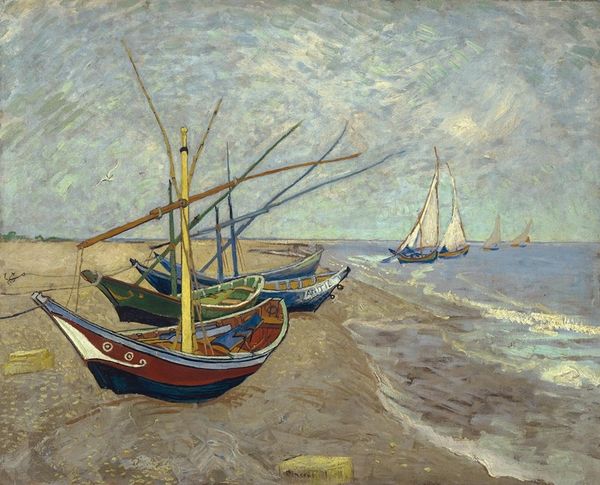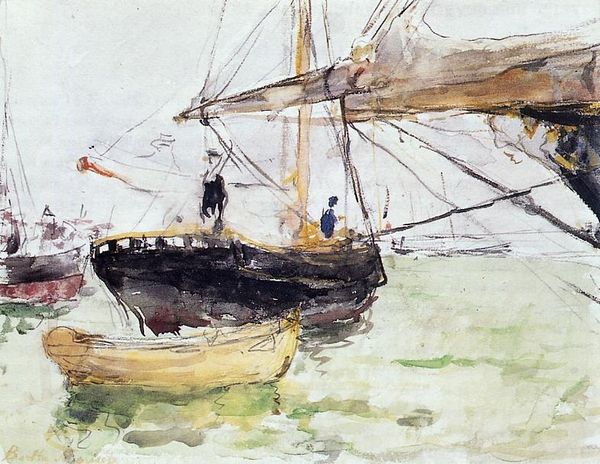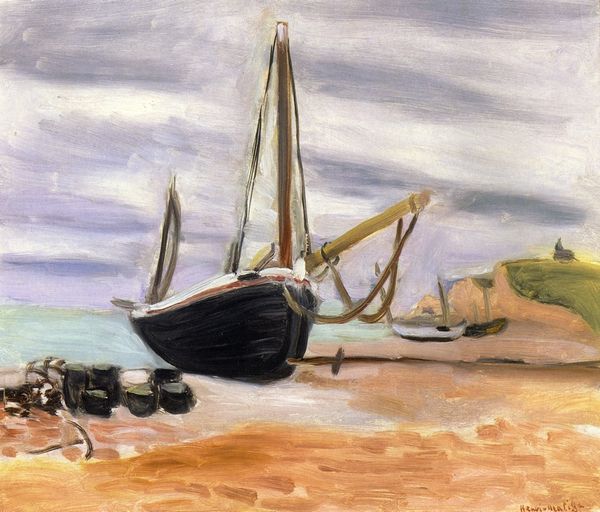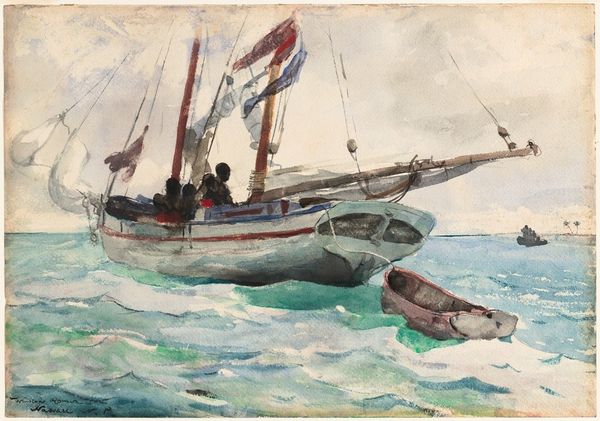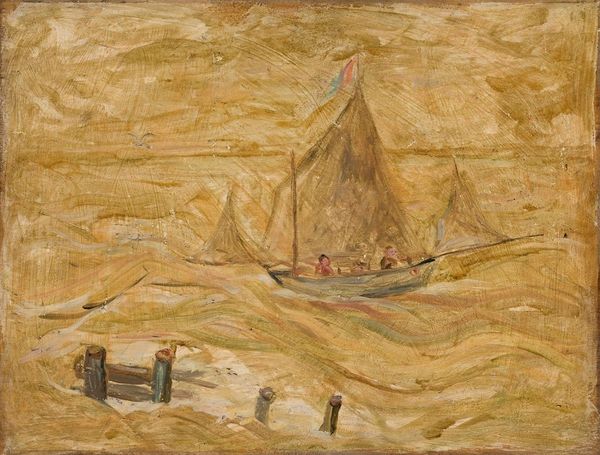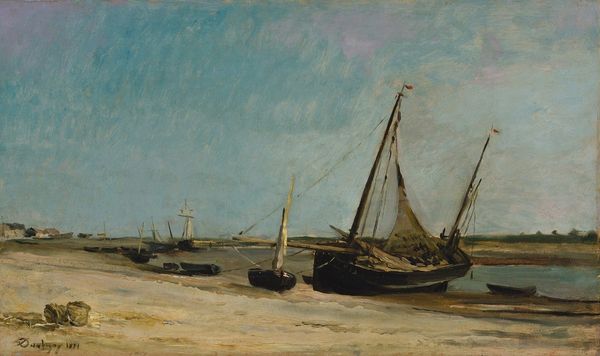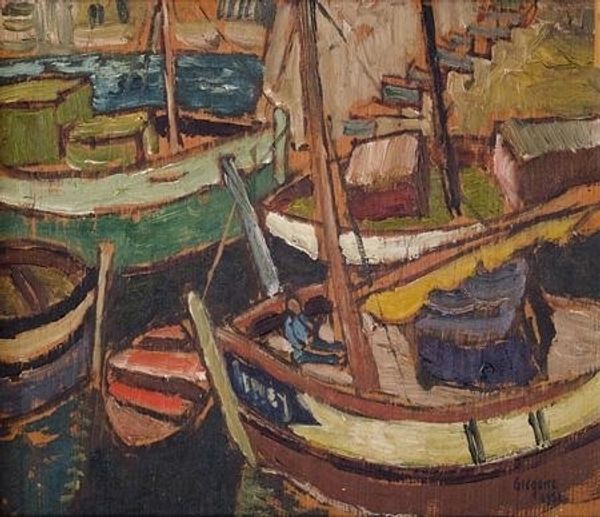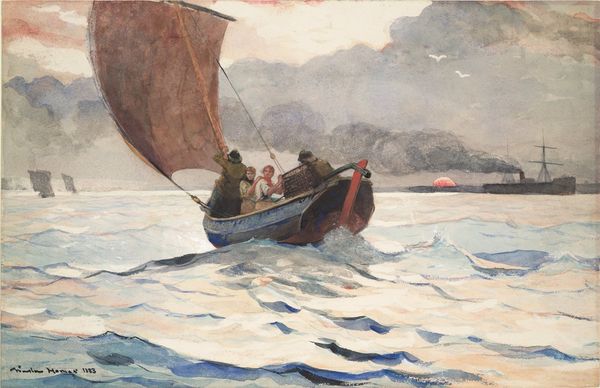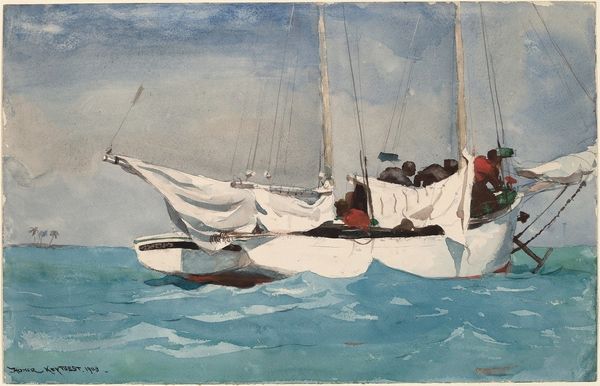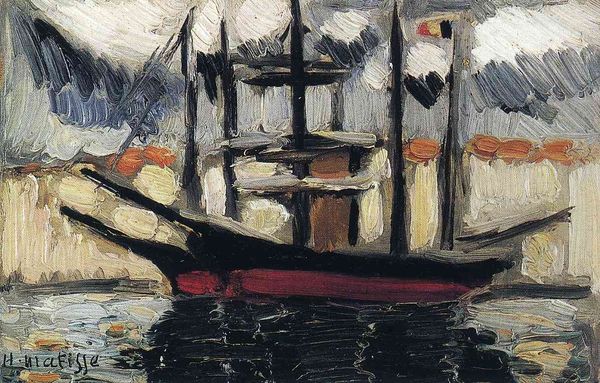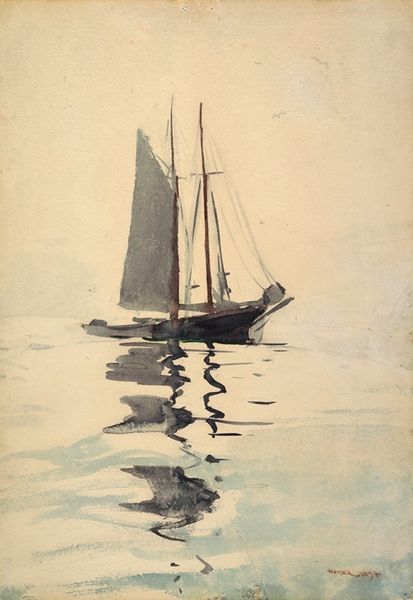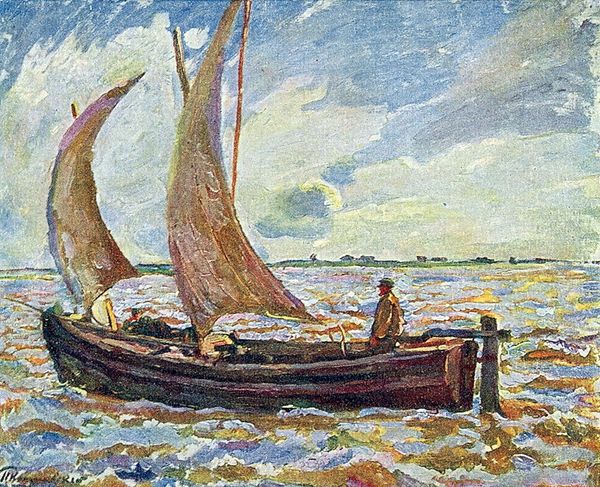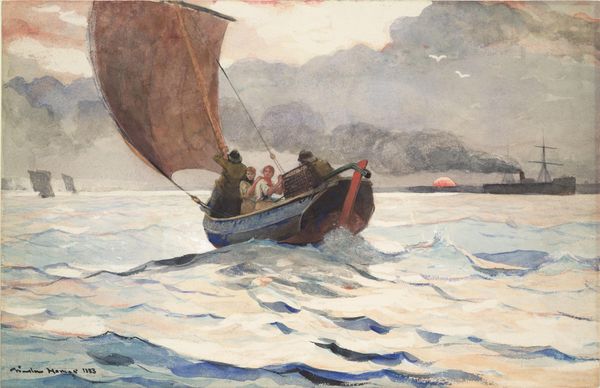
painting, plein-air, oil-paint
#
painting
#
impressionism
#
plein-air
#
oil-paint
#
landscape
#
figuration
#
oil painting
Copyright: Public Domain: Artvee
Editor: This is "Étude de bateaux sur la plage d’Étretat," a landscape painting by Claude Monet from 1885. The boats feel heavy, stranded on the beach. What stories do you see embedded in this scene? Curator: Well, this work transports me to a time of significant transition for the working class in coastal communities. Look closely, and you will notice that it's not a glamorous view. It suggests a pause, a moment of reflection for the mariners. Given the socio-political currents of the late 19th century, I see a subtle commentary on the relationship between labor and nature, a relationship where nature's power could leave working communities in uncertain situations. What are your thoughts? Editor: It definitely has that feel of suspended time, perhaps, post-work. What interests me is how the muted color palette contributes to this sense of…waiting. Curator: Precisely! The restrained palette isn't accidental. Monet wasn't merely recording the scene; he was also reacting to the broader discourse around labor and industrial change, imbuing the everyday with significance. Think about the rise of socialism during Monet’s time and how this could have impacted the kind of paintings artists felt drawn to do. Editor: So you're suggesting the painting might engage with the silent anxieties of the working class within a rapidly changing world? That it reflects that quiet disruption? Curator: Exactly! By focusing on this quiet, yet visually strong portrayal, Monet opens a space for us to consider those unacknowledged realities, and even prompts a discussion about our own present. It reminds us that art has the potential to not only show but also challenge society. Editor: I'm really learning to appreciate the power of contextualizing art, now I realize that artworks can show something beneath their immediate visible characteristics. Curator: Precisely, every piece is like a visual record rooted in specific contexts and beliefs!
Comments
No comments
Be the first to comment and join the conversation on the ultimate creative platform.
